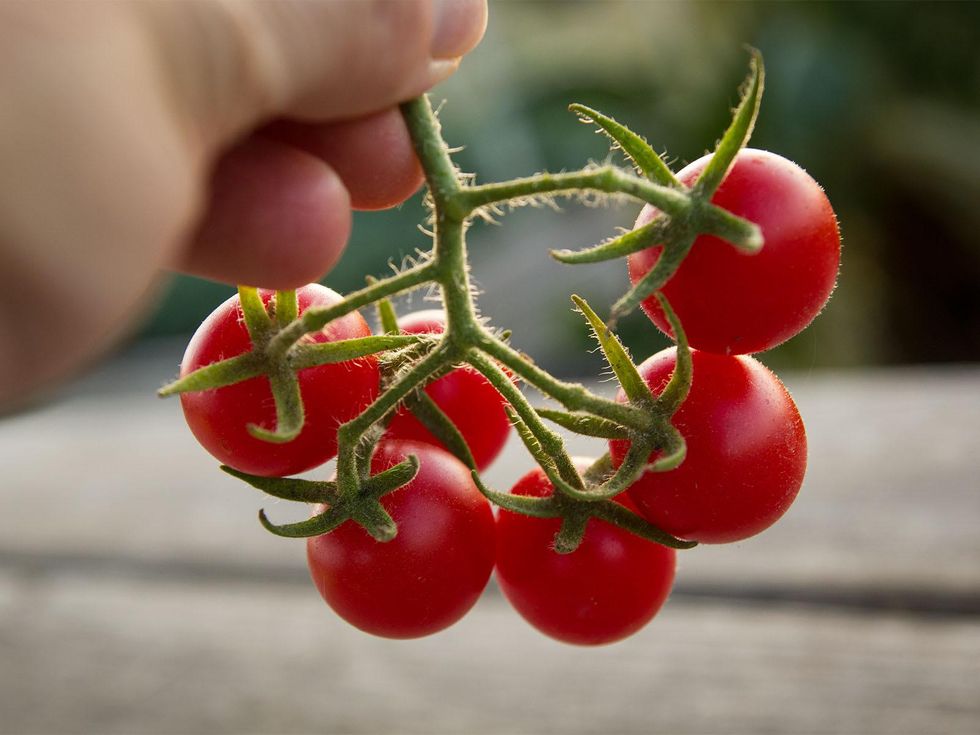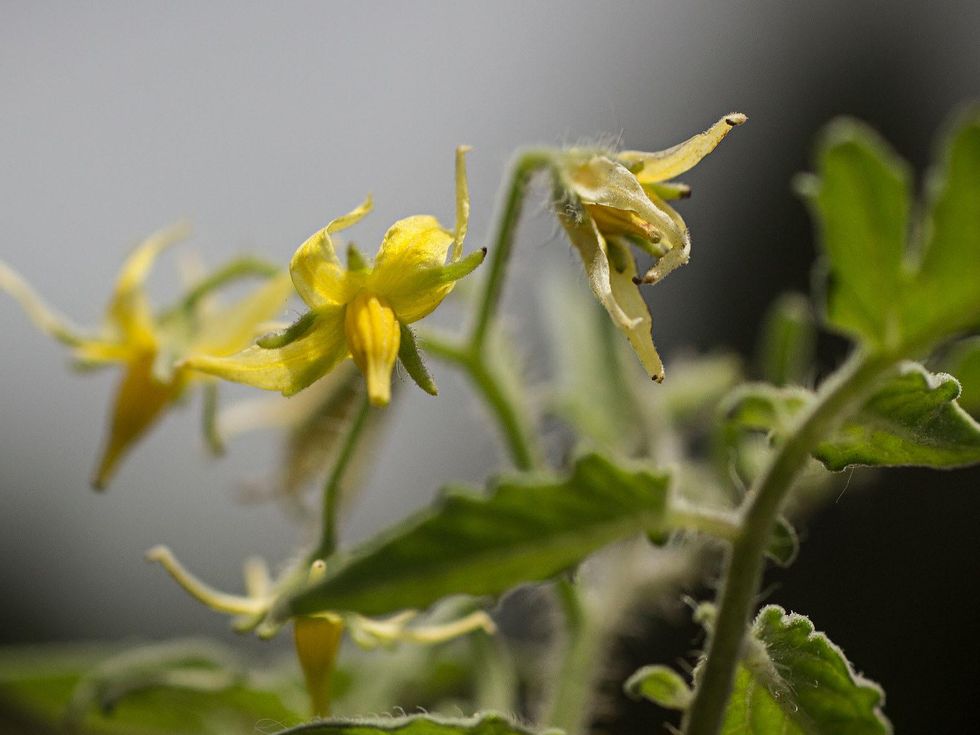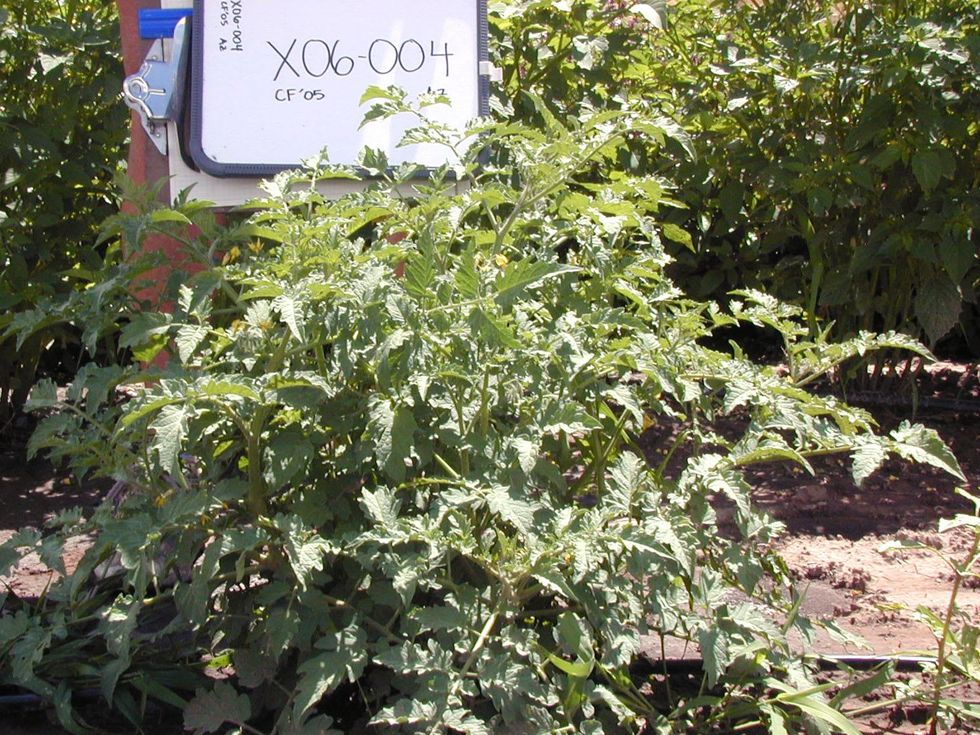The Farmer Diaries
Texas Wild tomato seed keeps North Texas farmer in the game
If not for Texas Wild tomatoes, I might have given up on gardening.
Twenty years ago, after finishing my degree at UT Arlington, I moved back to the Waxahachie home on 20 acres where I lived as a child. I had fallen out of gardening in my mid-teens, then became preoccupied with college. Nearly eight years had passed since I had grown anything.
My return was tentative. I had no tiller, so space was limited; I used a shovel to till up a 60-square-foot plot. I planted onions, pinto beans, bell peppers and a variety of tomatoes — including a Texas Wild tomato from a catalog from Peaceable Kingdom School in Washington, Texas.
If not for this hardy little Texas Wild tomato, I might have been too discouraged by my crop losses to stick with gardening.
The catalog's description noted that the Texas Wild was found growing unattended beside a road in South Texas; that was about all the information they had. The name alone was enough to entice me. I planted the seed along with a few more common Early Girl and Better Boy tomatoes I got from a nursery.
By summertime, grasshoppers invaded my garden and destroyed my crops – even the onions, which usually remain unharmed by pests. Everything was ruined except for the Texas Wild tomatoes. They seem unscathed by the grasshoppers.
They thrived whether I watered them or not, producing ripe cherry tomatoes an inch in diameter, a month earlier than I had ever harvested tomatoes before. Plump and a tawny reddish-orange in color, they were sweet enough to eat straight from the vine.
If not for this hardy little tomato, I might have been too discouraged by my crop losses to stick with gardening. Instead, I was excited to have found a tomato that grows like a weed, and I wanted to share it with the world.
The next year, when I tried to buy more Texas Wild seed, I found that Peaceable Kingdom School had closed. Thus began a decade-long search to find the seed again. I asked members of small seed-saving groups about them, to no avail.
Eventually, Internet access came along, and I searched hundreds of websites in pursuit of the Texas Wild. Finally in 2005, I found the seed in the online catalog of Native Seeds/SEARCH, a nonprofit seed conservation organization in Arizona.
Since my rediscovery of Texas Wild, I always maintain a sizeable planting of it in my own plot. I've noticed it has become better known within the gardening subculture in recent years. For Native Seeds/SEARCH, it’s a popular choice.
"It's a wonderful tomato that’s very prolific," says Melissa Kruse-Peeples, collections manager for Native Seeds/SEARCH. "It's small, tart and sweet, and it makes a good snack. And it's just fun. Unlike some tomato varieties, Texas Wild grows without much attention. You can't really kill it, which is attractive to many gardeners."
Texas Wild holds up in the heat and keeps on fruiting in the summer when domesticated tomato varieties shut down until fall.
Its ability to produce "volunteer" plants each spring from seed that has fallen to the ground, as well as its drought tolerance, distinguish the Texas Wild as a member of the wild tomato category. A week without supplemental watering is enough to kill most tomatoes, but not Texas Wild. It holds up in the heat and keeps on fruiting in the summer when domesticated tomato varieties shut down until fall.
Kruse-Peeples says that the origin of Texas Wild is uncertain. Tomatoes are a South American addition to our cuisine brought to North America mainly by Spanish colonists. By the late 1700s, tomatoes and chilies were adopted by Native American populations and have become iconic of the Southwest.
It’s unlikely, though, that Texas Wild’s history dates back to the conquistadors. In fact, a similar wild tomato called Punta Banda, also offered by the organization, was found growing unattended in the Baja Peninsula in Mexico. Although thoroughly naturalized and self-sowing for a period of time that's anyone's guess, it's speculated to have started after a seed dropped onto the beach from a tomato in a tourist's sandwich — a thoroughly unromantic story that's unlikely to generate sales at the farmers market.
"Still, though, Punta Banda is a hardy tomato that has the traits that we look for, so we added it to our collection," Kruse-Peeples says.
Native Seeds/SEARCH is committed to preserving the crops of the Southwest grown by Native Americans or the people of the Southwest. Additionally, the organization seeks to preserve the genetic diversity of crops that have proved themselves to be viable producers in arid conditions and are in danger of being forgotten.
"The Texas Wild tomato is rare and at risk of becoming obsolete," Kruse-Peeples says. "It was donated to us by one of our members and has been a part of our collection since 2003. Because of its hardiness and drought-resistance, and because it grows well in the region that we serve, we added it to our collection and have committed to maintain its genetic lineage in our seed bank and make it available to our members and customers."
In my attempt to opt out of industrialized agriculture and declare food independence, Texas Wild has liberated me from the produce aisle of the grocery store more than any other crop except for Swiss chard. Many of my Texas Wild tomato plants just pop up in one garden bed or another from fruit that I’ve accidentally dropped the year before.
My temporary lack of access to a source for Texas Wild seed pushed me to start saving a little of my own seed every year. But I continue to purchase fresh stock of professionally collected Texas Wild seed, just in case mine has become cross pollinated. One way or the other, I never want to to be apart from this tomato again.



